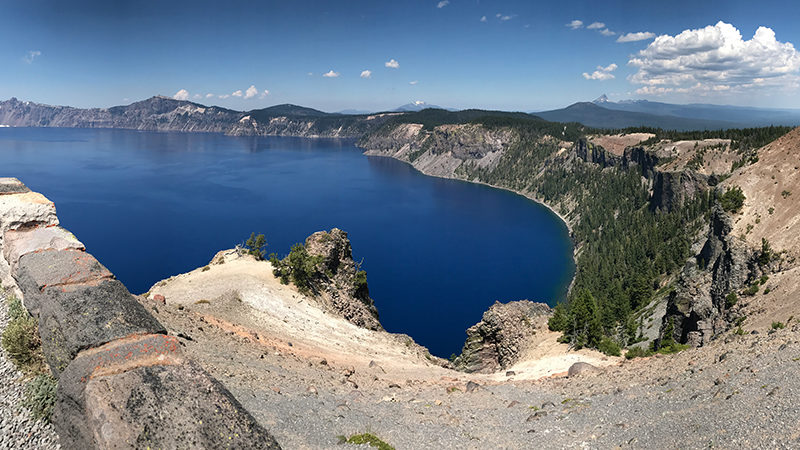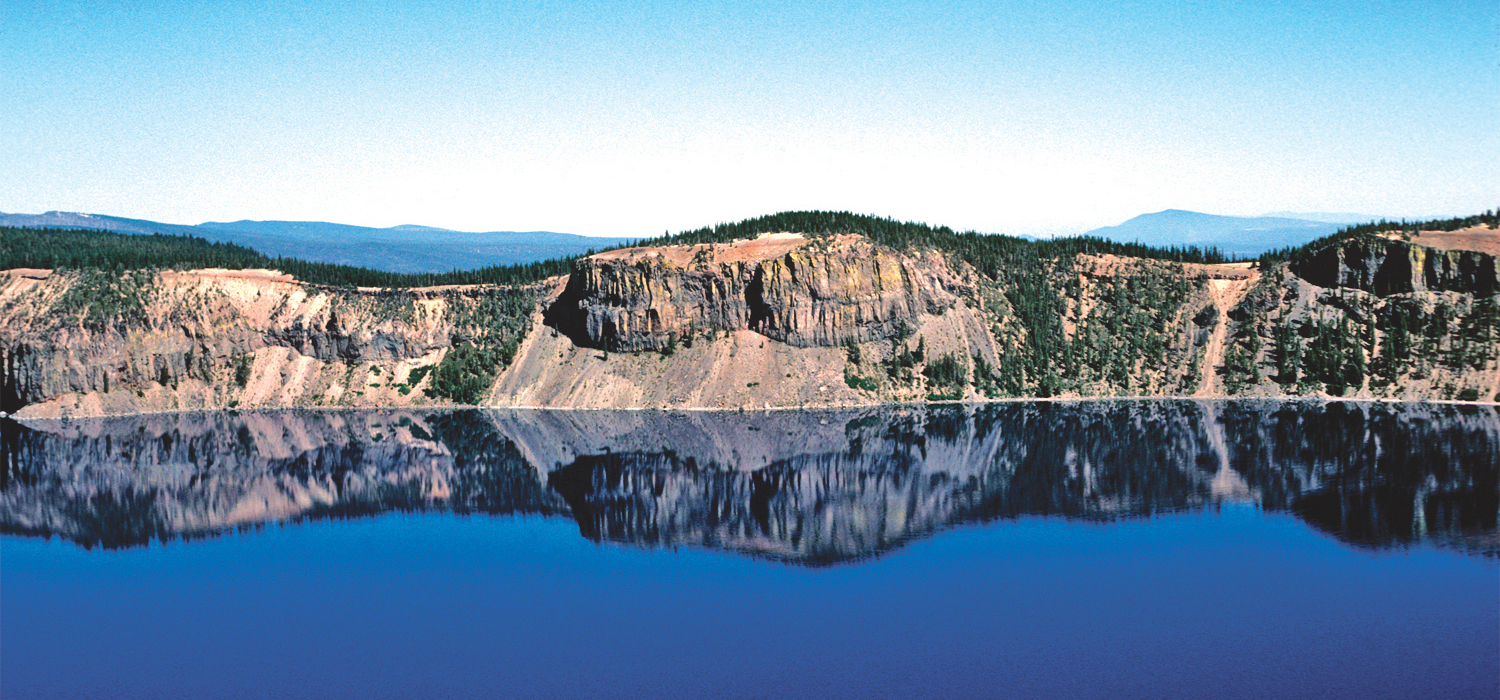
Wineglass Viewpoint, between Palisade Point Overlook and Cloudcap Overlook is one of the more than 30 scenic viewpoints along Crater Lake National Park’s famous Rim Drive — a drive circling the rim of the Crater Lake caldera that is so beautiful, it earned a spot on the National Register of Historic Places.
As we viewpoint hopped our way along Rim Drive, Wineglass Overlook was one we had to stop at due to name alone. But don’t fret if you can’t figure out why the overlook is called Wineglass at the actual overlook… The wineglass formation for which the overlook is named sits below the overlook, so you can’t actually see it from this viewpoint.
What you can see from the overlook is yet another breathtaking view of Crater Lake. It’s a great place to grab some photos before moving on to the next scenic vista point and the highest spot on the Rim Drive, Cloudcap Overlook.



Found on the northern wall of the Crater Lake caldera, Wineglass is a slide formation called a scree chute, that looks like a giant wine glass or martini glass when seen from across the lake. In the USGS photo below, you can see the Palisades on the left/middle and the Wineglass formation (look for the lighter colored gaps in the trees) on the right.
- The top bowl part of the Wineglass is made up of scree from the three pumice-fall deposits and the Wineglass Welded Tuff: glass particles that have been welded together from heat.
- The stem of the Wineglass crosses andesite lying on glacial till obscured by talus.

Know Before You Go
- Crater Lake National Park, Oregon’s only national park, does not have a physical street address, so it can be hard to locate us using GPS. We made the historic Crater Lake Lodge our first stop, which is located at 565 Rim Drive, Klamath Falls, Oregon 97604.
- At 1,943 feet deep, Crater Lake is the deepest lake in the United States and the principal feature of Crater Lake National Park.
- The 33 mile Rim Drive that travels around Crater Lake’s caldera features spectacular views of the lake and interpretive signage at all of the main vista points.
- Good for seven days, admissions fees are $30.00/vehicle, $25.00/motorcycle in the summer and $15.00/motorcycle in the winter, and $15.00/pedestrian or bicycle.
- The national park is open year-round, 24 hours a day but many of the park’s roads, trails, and facilities are closed seasonally.
- During periods of rain and snow, Crater Lake is often hidden by clouds — it is completely invisible about 50% of the time in the winter!
- Summers at Crater Lake are short but typically sunny. July, August, and September are your best bets for warm, dry weather. However, it can snow any day of the year.
- The park’s North Entrance is closed for about seven months each year. It closes at the first snowfall or on November 1, whichever comes first and reopens in early to mid-summer. The park’s South Entrance and West Entrance are open year-round. We visited the park in late July and the roads had only been open for a week!
- Crater Lake National Park has two visitor centers. The Steel Visitor Center at Park Headquarters is open every day except December 25 — 9:00 am to 5:00 pm from mid-April to early November and 10:00 am to 4:00 pm the rest of the year. The Rim Visitor Center at Rim Village is open daily from late May to late September from 9:30 am to 5:00 pm.
- Dogs on-leash are permitted within the park but only within developed areas and within Mazama Village and Lost Creek Campground. Dogs are not permitted on any trails or in undeveloped areas.